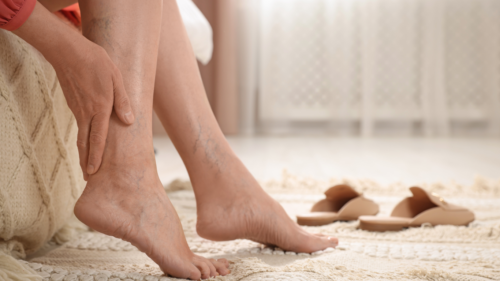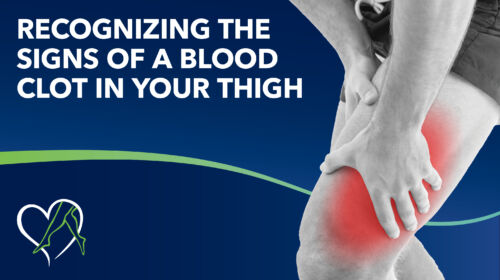

Phlebitis, while common and treatable, shouldn't be ignored. The primary goals of treating phlebitis are alleviating symptoms, preventing blood clots from forming or growing, and reducing the risk of complications, such as deep vein thrombosis (DVT) or pulmonary embolism.

Contact your CVR vascular specialist to discuss your varicose vein symptoms and discover how we can help you. Your journey to healthier veins begins here!

Learn more about May-Thurner syndrome, a rare vascular condition where the blood vessel carrying blood to your legs squeezes a vein, affecting blood flow and increasing the risk of blood clots. If you're experiencing unexplained pain in your left lower limb, it's important to understand this condition and discuss it with your healthcare provider."

This blog stresses the importance of recognizing deep vein thrombosis (DVT) symptoms and risks, particularly in the thighs. It highlights the prevalence and mortality rates of DVT and pulmonary embolism (PE), underscoring the need for early detection. The article outlines common symptoms, risk factors, and preventive measures, concluding with a recommendation for prompt medical attention and introducing the Center for Vein Restoration's services. Overall, it emphasizes the critical role of early detection and professional intervention in addressing DVT.

Embrace an active winter to safeguard against varicose veins and maintain healthy legs! Learn about the connection between sedentary habits and vein issues, and explore proactive measures like exercise, weight management, and compression stockings. Discover enjoyable winter activities that promote vein health and seek professional care from Center for Vein Restoration for comprehensive support. Keep your veins happy this winter by using these tips to ensure healthy legs when shorts and dresses make their return.

Explore the evolution of vein stripping as a treatment for venous insufficiency, once considered a standard procedure but now largely replaced by minimally invasive and more effective treatment options. Dr. Nancy L. Harthun, a board-certified vein physician, discusses the drawbacks of vein stripping, including its invasiveness, scarring, long recovery times, and potential complications. Dr. Harthun highlights advancements in diagnostic tools and presents modern vein treatments such as endovenous ablation, sclerotherapy, endovenous glue closure, and compression therapy as superior options for managing venous insufficiency. The blog emphasizes the shift towards outpatient, minimally invasive procedures, providing a comprehensive overview of state-of-the-art vein treatments.

This blog explores two prominent endovenous ablation treatments for varicose veins: radiofrequency ablation (RFA) and laser vein ablation, also known as endovenous laser therapy (EVLT). Both procedures are minimally invasive and use heat to close the affected vein; however, they differ in their energy sources. Understanding these differences is helpful for patients who are considering undergoing one of these outpatient procedures to treat problem veins.

This blog provides a comprehensive overview of thrombosis, a serious medical condition characterized by the formation of blood clots in blood vessels or the heart. It covers the types of thrombosis, including venous and arterial, detailing causes, symptoms, risk factors, diagnosis, and treatment options. The article emphasizes the importance of prompt medical attention, especially for conditions like deep vein thrombosis (DVT) and pulmonary embolism (PE), which can lead to life-threatening complications.